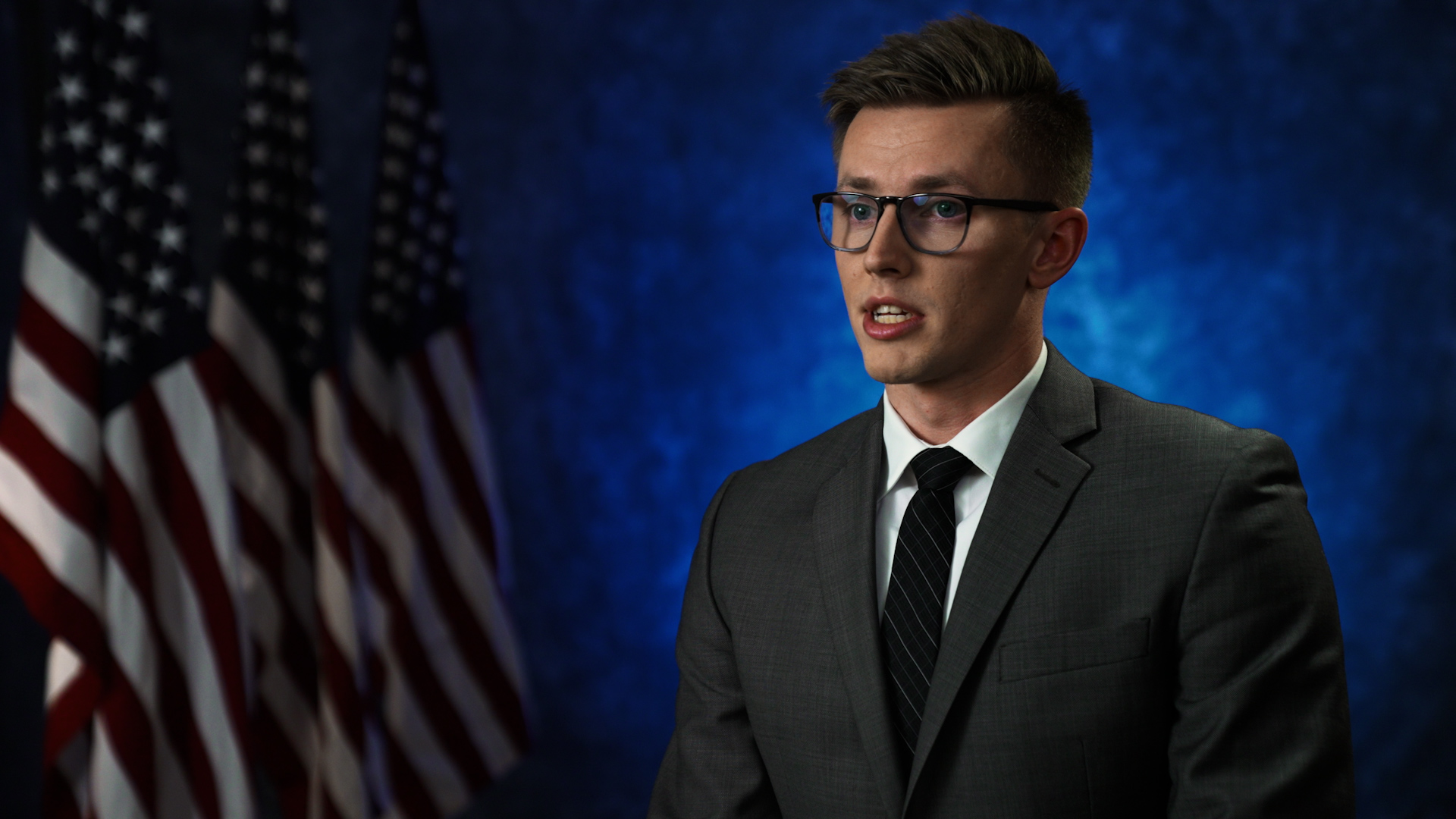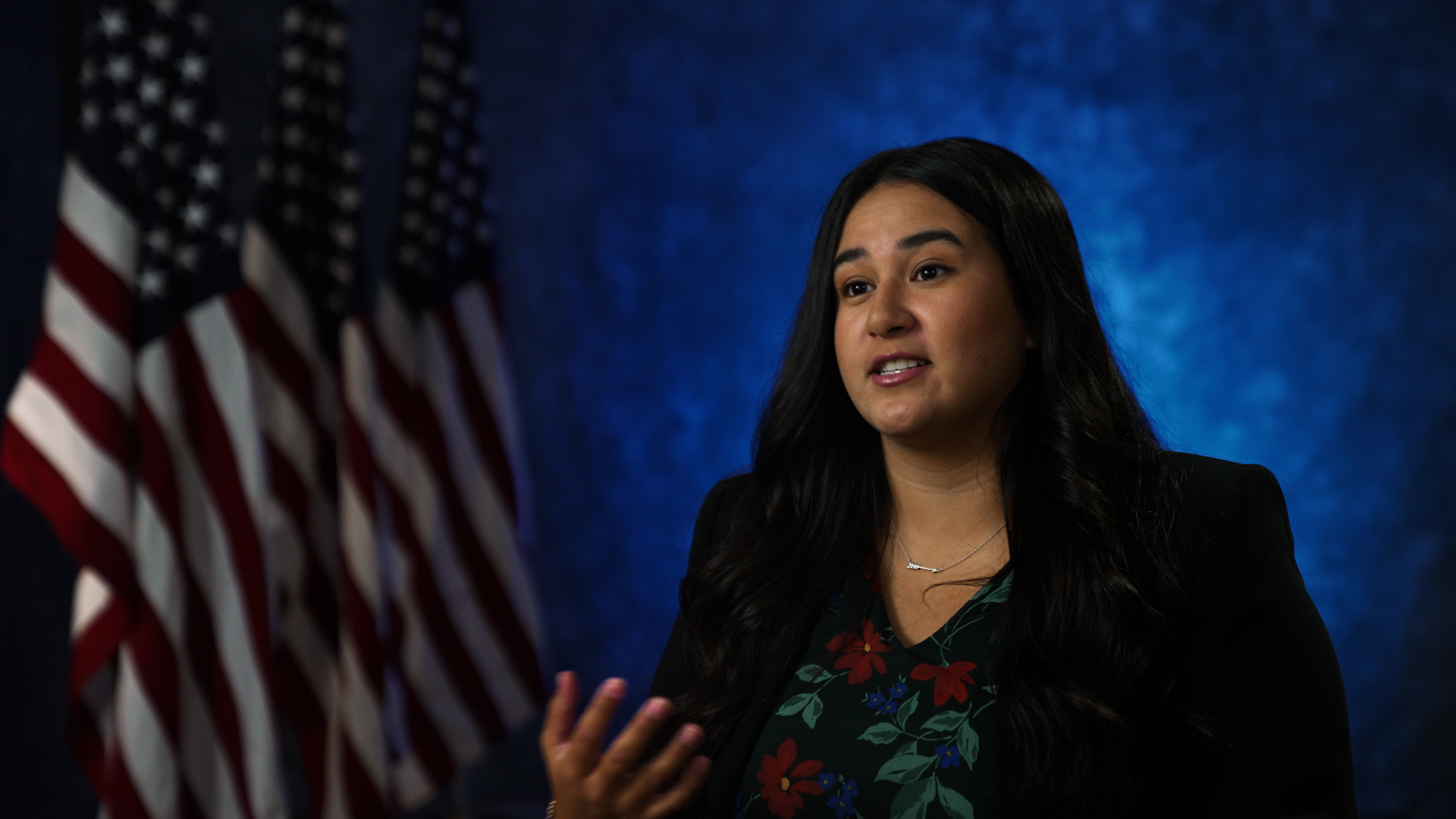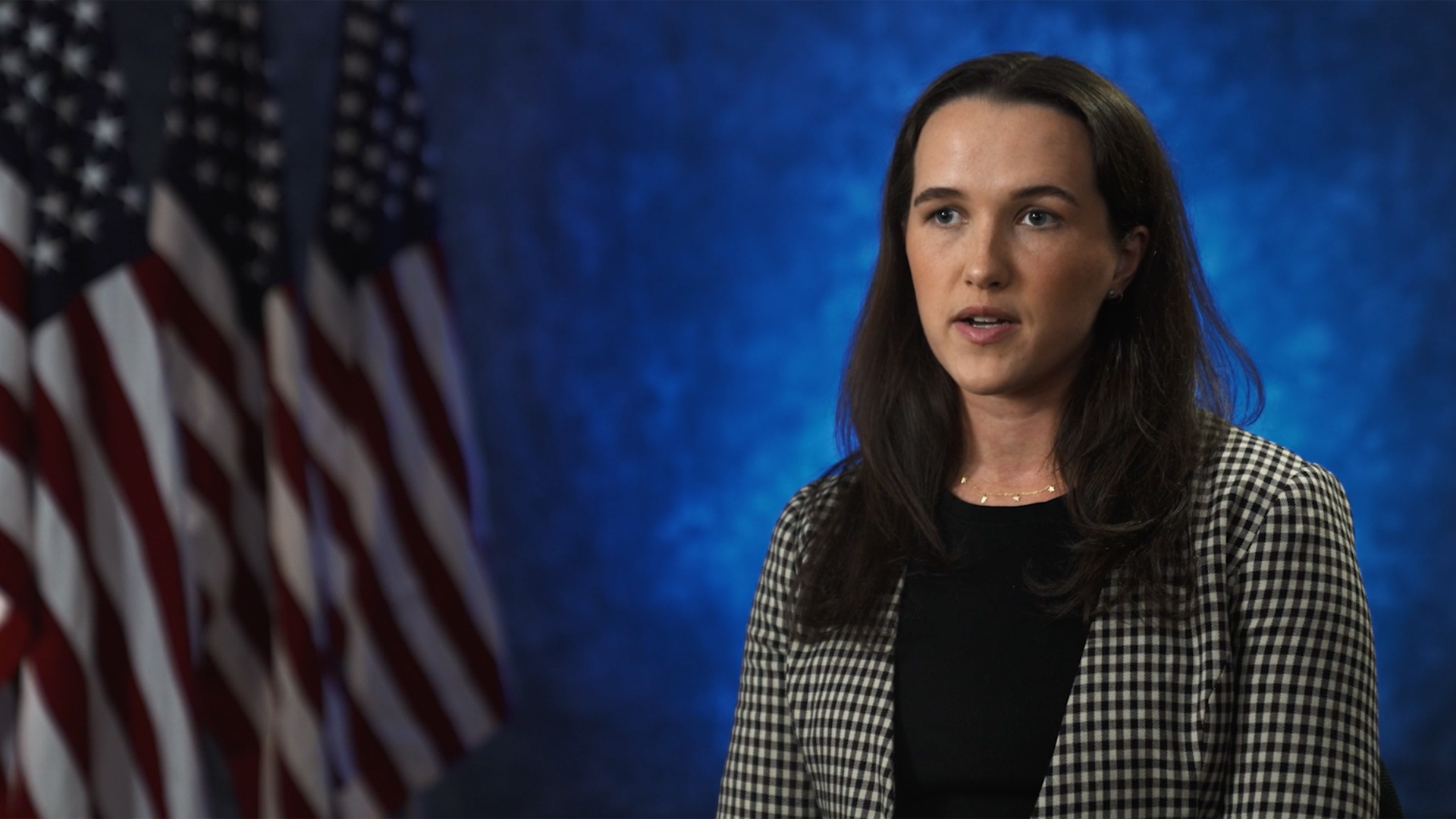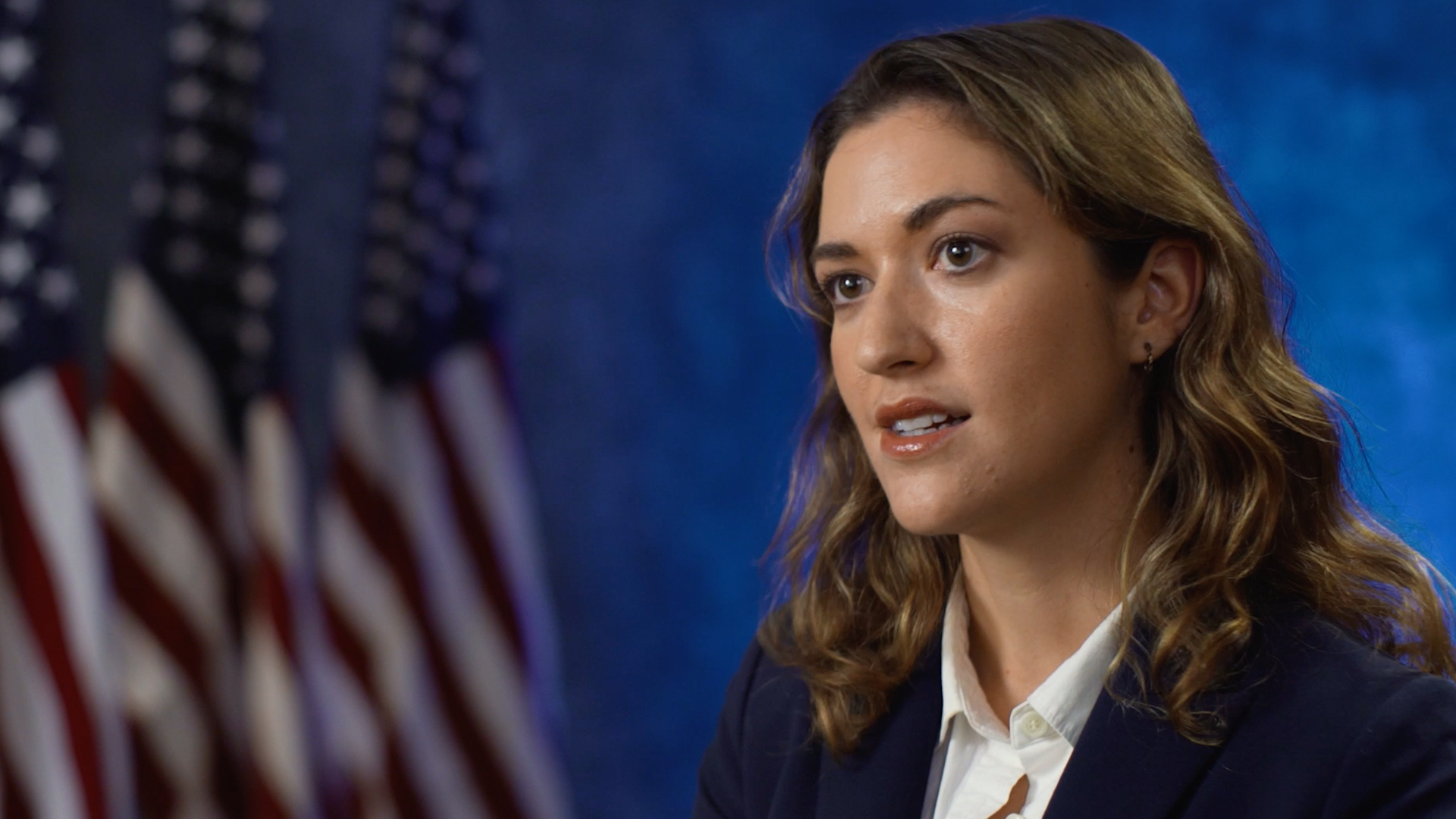Imagine you’re a high-achieving college student, interested in serving in a national security role in the federal government. You invest years in learning a critical language—perhaps of an ally, perhaps of an adversary—a language for which the federal government has a high demand and a limited workforce. You’re selected for not one, but two prestigious overseas government-sponsored fellowships and are encouraged to participate in both. After returning to the States, you move to Washington, D.C., to pursue a graduate degree at a competitive policy school. You apply for opportunities to serve in a national security position. But because you had fellowships abroad—administered by the federal government—the hiring process takes more than two years.CNAS Focus Group, March 11, 2022.
The national security workforce is full of stories like this one—which is the experience of someone who successfully navigated into the system. Many others decide not to pursue government service in the first place, whether because they believe the option isn’t open to them, or because the hiring process is so onerous that they lose interest or pursue more readily available options.
To meet the challenge of protecting the country and its national interests, the federal government must attract, recruit, and retain experienced, educated individuals with skills specific to national security, including foreign language proficiency, regional knowledge, legal expertise, or a background in engineering, computer science, or data analytics. It also needs people who can lead, manage, and communicate.
Fortunately, there are highly motivated Americans—from undergraduate college students through senior-level professionals—who are developing the education, experience, and credentials required for work in national security departments and agencies. This population has a strong interest in serving the country even as other opportunities present themselves. But challenges such as opaque hiring practices, long clearance processes, and limited access to professional networks hinder people’s chances at employment in the federal government. As a result, the government is unable to fill critical national security roles, while individuals with the necessary skill sets and desire to serve are sidelined from a federal career.
To attract, recruit, and retain those with the required qualifications and interests, departments and agencies must understand the motivations of the next generation and the challenges they face when seeking government careers in national security. As part of this project, CNAS researchers organized focus groups and conducted a survey to identify the motivations, priorities, and skill sets of those interested in government service, along with the challenges, barriers, and opportunities in taking this path. The project examines the current civilian national security talent pipeline and explores the problems associated with the recruitment and retention of civil servants in national security departments and agencies.
What did we find? Improvements to the federal hiring process and the clearance timeline, greater access to talent beyond Washington, D.C., and expansion of initial pathways into government service could ensure that the federal government has the employees it needs to secure the nation. These improvements require action from the executive branch and Congress.
Motivations
Survey respondents and focus group participants alike expressed that their interest in government national security careers was motivated by a sense of mission, purpose, and service to the greater good. Most survey respondents even indicated that a sense of purpose or mission was the number one factor they considered when offered a job.
There is a sense that the work of government, particularly the field of national security, is unique and has no equivalent outside of federal employment—even among those who work on the same issues, but as a government contractor.
Still, even the respondents who reported a strong desire to serve indicated a deep consideration of the financial implications associated with a career in government versus the private sector, where compensation may be greater. Similarly, married or partnered respondents raised the tradeoffs they must consider between their partner’s career opportunities and the geographic constraints of government jobs in national security, which are largely located in Washington, D.C.
Top Consideration When Accepting a Job OfferResults from CNAS survey, question 17. Respondents were asked to rank order the eight options; this chart provides the percentage of individuals who selected the given choice as their first priority. N=124; percentages add to more than 100% due to rounding.
The CNAS team posed this question to survey respondents:
Consider the following scenario: you are offered a job within the federal government on a portfolio that matters to you. You are simultaneously offered a position within the private sector, working on a similar portfolio, for twice the salary. Which option is more appealing to you?
Respondents were split down the middle on this question—50 percent opted for the government job, and 50 percent for the private sector opportunity with higher compensation.Source: Results from CNAS survey, question 16. N=122.
Discussions with those preferring a private sector job with higher pay revealed that it was not compensation alone that drove their decision. Rather, those who selected the private sector positions were preemptively accounting for challenges they associated with government employment, such as the time between an initial job offer and their start date (which could be delayed by a matter of years due to the clearance process). Others noted that their motivation for the private sector opportunity was tied less to compensation considerations and more to the pace of decision-making and clear accountability as measured by bottom-line outcomes in the private sector.CNAS Professional Focus Group D, February 23, 2022.
The impact of September 11, 2001, and the post-9/11 wars in Iraq and Afghanistan continues to play a pivotal role in motivating the next generation to pursue government service in national security, though differences exist across generations. Most focus group participants were either Millennials, who entered college and the workforce shortly after 9/11, or members of Gen Z, currently in college and the workforce. For Millennials, 9/11 occurred at a pivotal moment—they were deciding on their college majors, exploring potential career opportunities, and selecting graduate programs. Many Millennials noted that 9/11 served as a decisive factor when the importance of national security was made clear to them as high school students. Several participants who grew up in the Northeast, especially New York and New Jersey, acknowledged the long shadow of 9/11 as a motivation for their interest in national security and government careers.Undergraduate Student Focus Group C, February 11, 2022.
50/50
50% of survey respondents opted for a mission-focused government job, while 50% chose a private sector opportunity with higher compensation.
Challenges
What’s standing in the way of these highly skilled and motivated individuals joining the federal national security workforce? There are two major types of challenges to federal hiring and retention: barriers to access and procedural challenges. Barriers to access—including the federal internship experience, the importance of location and networking, available college resources, student loan debt, and the weight of veterans’ preference in the application process—hinder interested individuals from seeking careers in government service. And while the federal government can adjust some of these barriers, many of them come into play before an applicant ever interacts with federal hiring systems.
In general, all federal civilian job postings require an open, competitive process. However, such a process tends to favor applicants with significant work experience, even for entry-level positions. To increase opportunities for those interested in entering federal service, the government offers three programs: the internship program, the recent graduates program, and the Presidential Management Fellowship (PMF), collectively referred to as the Pathways Program.U.S. Office of Personnel Management, Policy, Data, Oversight: Hiring Information, Pathways FAQs.
Participants in the CNAS survey and focus groups reported several challenges with federal internships. First, the application process for internships such as those in the Pathways Program can be as opaque as the broader federal application system. Second, many federal internships are unpaid, and this limits such opportunities to students at universities in Washington, D.C., and those with the financial means to accept unpaid positions in a city with a high cost of living. Third, some respondents said that ultimately, they were unable to take advantage of an internship they’d already accepted because of the security clearance timeline. Internship applications are typically due during a fall semester for opportunities the following summer. In at least one case, a student was offered and accepted a summer internship during their fall semester, secured D.C. housing for the following summer, but was unable to start the internship because of delays in the clearance process—thus leaving them in the position of paying for a costly lease without being able to participate in the internship program.
Lastly, some participants experienced years of “serial internships,” instead of the short-term temporary jobs converting into full-time employment. The internships had been presented as opportunities to build both skill sets and networks, but many participants felt they only opened doors to future internships, rather than providing an avenue to an entry-level permanent position.
The advice “it’s not what you know, it’s who you know” is a common refrain in university career centers and from current federal employees speaking with students and professionals interested in government service.For example, Tom Manatos, “11 Networking Tips for Your D.C. Job Hunt,” Biden School of Public Policy and Administration; and “Why D.C. Is a Top Networking Destination for College Students,” The Washington Center, January 25, 2019. However, effective networking presumes proximity to those in government. Focus group participants from non–Washington, D.C., schools consistently reported difficulties breaking into the “D.C. bubble” or the “Acela Corridor” (referring to the Amtrak train route from Washington, D.C., through New York City to Boston). Those coming from afar felt not only that they did not have the right contacts in Washington, but also that they did not even have the personal network to make those connections.
Many federal internships are unpaid, and this limits such opportunities to students at universities in Washington, D.C., and those with the financial means to accept unpaid positions in a city with a high cost of living.
Systemic Challenges
Individuals interested in a national security career in government service must overcome a series of obstacles to enter federal employment.
Challenges including government hiring freezes can limit initial opportunities, leading some individuals to pursue another career path.
Extended hiring timelines and delays in the security clearance process can dissuade otherwise interested and qualified individuals.
Geographic limitations, restrictions on remote work in national security, and co-location considerations for dual-professional couples introduce additional challenges to an individual considering a career in government service.
Mentorship and advocacy provide valuable guidance and support to individuals pursuing a career in government service—but not everyone has a mentor or advocate.
While the next generation of potential national security public servants indicates their strong desire to serve, the compound effects of a series of barriers lead to a loss of talent for the federal government.
Graduate students at D.C.-based universities indicated that geographic location combined with access to networks had motivated their selection of a graduate school. The location enabled participation in internships and provided access to professors, mentors, and others within their networks who guided them into government careers in national security. However, many acknowledged that the opportunity came at a high cost of living and tuition, leading to significant student debt upon graduation.
Additionally, focus group participants who currently or formerly served in government emphasized the role of in-person meetings, which provide not only a personalized point of reference but also the opportunity to see how important soft skills are in hiring decisions. Such relationships and the information they bring can inform application materials and interview preparation, increasing the likelihood of employment.
Students and recent graduates—particularly those located outside of the D.C. Beltway—reported that their college or university career centers offered limited guidance on paths into the national security civil service. These students indicated a strong desire to access resources and networks through their career centers, but many felt underserved by existing resources. Those attending institutions outside of D.C. pointed to a lack of access to relevant information about careers in the federal government. Career centers do not necessarily have information about internships, and they may not know eligibility standards for entry-level positions within the federal government.
The federal workforce, particularly the senior General Schedule (GS) paygrades, requires a highly educated population. GS-5 and GS-7 positions necessitate a bachelor’s degree at the time of employment; GS-9 positions and above require graduate degrees or the equivalent experience. To finance this education, the average American with a bachelor’s degree from a public university holds more than $30,000 in student loan debt; the average American with a graduate degree owes more than $91,000.Melanie Hanson, “Student Loan Debt Statistics,” Education Data Initiative, May 9, 2022; Melanie Hanson, “Average Graduate Student Loan Debt,” Education Data Initiative, October 13, 2021. Living expenses further add to consumer debt for those who attend high-cost schools in D.C. or the Northeast.
While most participants indicated that their advanced degrees and additional debt were worth the cost, they highlighted challenges unique to government employment in the national security field—specifically, those associated with the clearance process. Delayed timelines between a job offer and a security clearance could be backlogged for years. For those who pursued a graduate degree to break into national security within the government—and thus incurred a significant amount of debt—the timeline between a job offer and a completed security clearance was untenable. Some felt forced to pursue opportunities in the private sector to pay their student loan debt, walking away out of necessity from the work they would have preferred—and for which they were qualified.
Veterans’ preference refers to a federal hiring authority intended to provide opportunities within the government to individuals who have served in the military. The idea behind the policy acknowledged that a certain degree of economic loss was associated with military service, particularly during eras of conscription.U.S. Office of Personnel Management, Policy, Data, Oversight: Veterans Services. However, recent critiques of the policy highlight its unintended consequences, including adverse outcomes for highly competitive nonveteran talent and the “homogenization” of the national security civil service.Frances Tilney Burke and Mackenzie Eaglen, “Is Veterans’ Preference Bad for the National Security Workforce?” War on the Rocks,June 16, 2020.
Veterans’ preference in federal hiring operates on a points system. Based on an agency-wide numerical ranking system, eligible applicants are awarded up to 10 points for their years of service and the level of disability for competitive service based on a rating by the Department of Veterans Affairs. As of Fiscal Year 2018, veterans with preference accounted for 27 percent of the federal workforce.
While veterans’ preference continues to serve an important function, it presents challenges to nonveterans competing for federal employment within the GS system. Veterans have several advantages in the hiring process in addition to the points system: they often have relevant professional experience from their time in uniform and may also belong to more established networks within the departments. A veteran may have an active security clearance—another advantage over civilians who may have to wait months, if not years. As a result, hiring outcomes for nonveterans may be disproportionately negatively affected. For example, recent research has identified statistically significant impacts of veterans’ preference on women’s representation across the Department of Defense civilian workforce, given that women are represented at significantly lower rates than men in the military, and thus are underrepresented among those with veterans’ preference.David Schulker and Miriam Matthews, “Women’s Representation in the U.S. Department of Defense Workforce: Addressing the Influence of Veterans’ Employment,” RR-2458 (RAND, 2018).
Applicants also face procedural challenges—both in terms of the application and clearance processes—and find the federal hiring process particularly opaque, time consuming, and, in many cases, disheartening.
The main job application portal for the federal government is USAJobs, and its purpose is to “recruit and retain a world-class government workforce for the American people.”“About USAJobs,” USAJobs. The site manages more than 17,000 postings daily, adding an average of 907 new postings per day. It provides a database of more than 6 million active profiles of individuals interested in government service.“About USAJobs.” To maximize efficiency when managing such vast amounts of postings and candidate information, systems review for key words (using either algorithms or human-resource professionals), and this requires applicants to explicitly address every critical component of a posting in order to proceed to a further round of consideration.“FAQs: Resumes are scanned for keywords by an automated system,” USAJobs.
In large part, CNAS focus group participants expressed frustration with this system. They described it as a “wormhole,” and any attempt to use it to secure even an interview was “like mastering a Rubik’s Cube” or “learning to play a game.”CNAS Graduate Student Focus Group A, February 3, 2022. One participant noted, “You throw your entire life’s work into USAJobs, and you hope that it tells you your life has meant something.”CNAS Graduate Student Focus Group A, February 3, 2022. Timeliness in rejections was further disheartening to candidates; one focus group participant received an automated rejection for an application from more than a year earlier—while awaiting feedback on a current application.
While USAJobs is the primary hiring platform within the federal government, the intelligence community uses a separate system called IntelligenceCareers.gov. This system is more specific and tailored to a defined community within national security government service, but CNAS focus group participants noted that it was yet another system they had to learn on top of USAJobs.
You throw your entire life’s work into USAJobs, and you hope that it tells you your life has meant something.
—CNAS Graduate Student Focus Group A, February 3, 2022.
Focus group participants and survey respondents consistently reported challenges with the clearance process. This process has an outsized impact on government career paths for those within the national security community by comparison with other functions of government that have domestic, non–security focused departments and agencies.
Security clearance processing timelines have been a challenge in the post-9/11 national security era, but timelines peaked in the second quarter of FY 2019. In an effort to reduce the wait time, the federal government, led by the Defense Counterintelligence and Security Agency, undertook the Trusted Workforce 2.0 initiative (TW 2.0). The effort achieved moderate success by the fourth quarter of FY 2021.
It takes so much pain and suffering to go through the door. As an American who has foreign family, foreign education, I spent a lot of my childhood overseas—[which I] thought would all be valuable things—I had a number of foreign acquaintances. It is not only an administrative process, it’s a type of lifestyle that you are signing up for. Adjudicating your personal relationships; what type of people are you willing to sacrifice in your life to make it feel like it is worth it? Because of the clearance process, I almost went into the private sector. People in life matter, and any job that makes you choose between the people you love and the mission is tricky.”
—Interview with current federal employee, May 16, 2022.
The federal government supports several international language fellowships intended to increase knowledge of critical languages and cultural competency in countries important to the U.S. national security community. International fellowships include the Fulbright U.S. Student Program, the Boren Scholarship and Fellowship, and the Critical Language Scholarship. Each of these opportunities provides a fully funded study abroad program for approximately one year, during which participants are expected to develop fluency in languages critical to national security. The federal government invests a significant amount of money in these programs—an estimated $25.6 million.CNAS estimates based on government reporting: $8,811,000 for the Fulbright U.S. Student Program; $7,8000,000 (estimated) for the Boren Scholarship and Boren Fellowship; and $9,000,000 for the Critical Language Scholarship. Federal Register, Department of Education Applications for New Awards: Fulbright-Hays Doctoral Dissertation Research Abroad Fellowship Program, 87 no. 22 (February 2, 2022); “Boren Awards Statistics & Top Institutions,” Boren Awards, 2021; U.S. Department of State, Bureau of Educational and Cultural Affairs (ECA) Notice of Funding Opportunity: FY 2022 Critical Language Scholarship, SFOP0007818 (March 15, 2021), In exchange for this investment, the government ensures a ready supply of individuals with critical skill sets that are in high demand in the national security community.
However, those who participate in these programs perceive that they are penalized in the hiring process for the precise experiences that make them ideal candidates. Significant time overseas—particularly in countries that are U.S. national security priorities—can become a real hindrance in the security clearance process. Connections with locals in countries such as South Korea, China, Russia, Israel, Egypt, or Jordan—deeply forged through U.S. government–funded learning opportunities—become red flags in applicants’ files. Such flags lead the U.S. government—after identifying competitive talent and investing in language skill development—to disqualify or dissuade applicants from government employment.CNAS Professional Focus Group H, March 11, 2022.
Average Security Clearance Timelines
While the average security clearance timeline has improved since 2019, it is still prohibitive for many candidates interested in government service. In 2019 the average length of the initial secret clearance timeline was 200 days (blue) as compared to 79 days (orange) in 2021. The ideal length of this investigation would be 30 days (green).
An initial top secret clearance investigation took 400 days in 2019 (blue) and 170 days in 2021 (orange). The ideal average length of time for this investigation would be 30 days (green).
In 2019, the average length of the reinvestigation timeline was 450 days (blue) as compared to 176 days (orange) in 2021. The ideal length of this investigation would be 30 days (green).
These challenges produce negative outcomes for both applicants and the federal government. The government needs people with the skill sets, experience, education, work ethic, and desire to serve who will fulfill the nation’s security mission. And there is a vibrant population of students and professionals who meet the requirements and have a strong motivation to serve—but they face entry or procedural barriers.
A common theme among survey and focus group participants was the sentiment that each step in their professional journey produced a feeling of “one step forward, two steps back.” A graduate degree provided a needed credential but resulted in debt that made government service a challenge. Language fellowships in foreign countries provided a critical skill set but became a liability during the clearance process. And a government internship in national security helped them build networks and learn internal processes but evolved into a career of serial internships with no permanent employment opportunities. Participants also expressed a sense that the pathway to a career in government service was nonlinear and therefore difficult to plan. As in playing the Game of Life, there was a sense that for every step forward, there were two steps back.
The challenges individuals face also lead to negative outcomes for the federal government. When qualified, interested applicants encounter barriers to government service, they may look elsewhere. And once they pursue a career outside of government, it becomes increasingly difficult for the government to attract them back. These barriers have the potential to permanently turn qualified people away from government service, and this denies the government access to specific skill sets that are necessary for national security, including in language, engineering, and international or human rights law. At each step in the process, the government loses access to this talent, reducing the pool of interested candidates.
Recommendations
A failure to mitigate these challenges will not only continue to frustrate individuals interested in and qualified for civil service careers in national security, it will also hinder government access to a competitive talent pool with the precise knowledge, skills, experiences, and interests needed to meet critical national security requirements across relevant departments and agencies. The following recommendations provide a roadmap to increase the government’s access to national security talent.
Congress
- The Armed Services Committees should outline incentives, goals, and requirements for civilian hiring within the National Defense Authorization Act to enable the DoD and military services to access individuals with skill sets that are in high demand but also in low density.
- The House Committee on Oversight and Government Reform and the Senate Committee on Homeland Security and Government Accountability should provide oversight of the efficacy and efficiency of the USAJobs platform to reduce the time it takes to fill federal job postings.
Departments and Agencies
- The Office of Personnel Management should evaluate the efficacy and efficiency of the USAJobs platform, identify persistent barriers in the federal hiring process, and set specific, attainable deadlines for platform improvement.
- Departments and agencies within the national security sector should actively monitor the time it takes to hire and onboard new employees, with a goal of 14–21 days, in line with private sector industry standards.
- Departments and agencies should project ahead, six months at a time, their recruiting and retention requirements so that hiring and onboarding are better timed to meet future demands.
Colleges and Universities
- Career centers should work with university alumni associations to maintain opt-in databases for alumni currently employed in the federal government in order to foster relationships between current students and those who have successfully navigated the federal hiring process.
- Career centers and academic departments should facilitate campus visits from alumni currently serving in government to provide informational talks regarding their experience in the federal hiring process.
- Career centers should ensure that counselors learn about the federal hiring process, including a thorough understanding of the GS system, requirements for each GS level, and internship opportunities, in order to provide comprehensive guidance to students about pathways into government service.
Individuals
- Students should study the reporting required for the clearance process before they pursue international professional or educational opportunities. They should also keep records regarding foreign contacts and living arrangements. If possible, it is wise to connect with other Americans in the assigned region to establish contacts for the clearance process at a later date.
- Individuals interested in government service should be mindful of salary differences between private and federal employment and maintain a standard of living consistent with the lower government salaries to ensure decision flexibility in the event that a civil service opportunity should become available.
Acknowledgments
The authors would like to thank the many people who contributed to and inspired the development of this research. They extend their gratitude to Cody Kennedy for his analysis and contributions to the project in its early stages. The authors thank Loren DeJonge Schulman and Alice Hunt Friend for their thoughtful reviews and feedback. They are grateful as well to Maura McCarthy, Melody Cook, Emma Swislow, and Rin Rothback for their help with the design and publication process. This report was made possible with the generous support of The William and Flora Hewlett Foundation.
As a research and policy institution committed to the highest standards of organizational, intellectual, and personal integrity, CNAS maintains strict intellectual independence and sole editorial direction and control over its ideas, projects, publications, events, and other research activities. CNAS does not take institutional positions on policy issues and the content of CNAS publications reflects the views of their authors alone. In keeping with its mission and values, CNAS does not engage in lobbying activity and complies fully with all applicable federal, state, and local laws. CNAS will not engage in any representational activities or advocacy on behalf of any entities or interests and, to the extent that the Center accepts funding from non-U.S. sources, its activities will be limited to bona fide scholastic, academic, and research-related activities, consistent with applicable federal law. The Center publicly acknowledges on its website annually all donors who contribute.
By Katherine L. Kuzminski, Nathalie Grogan, and Celina Pouchet
Published August 2023






